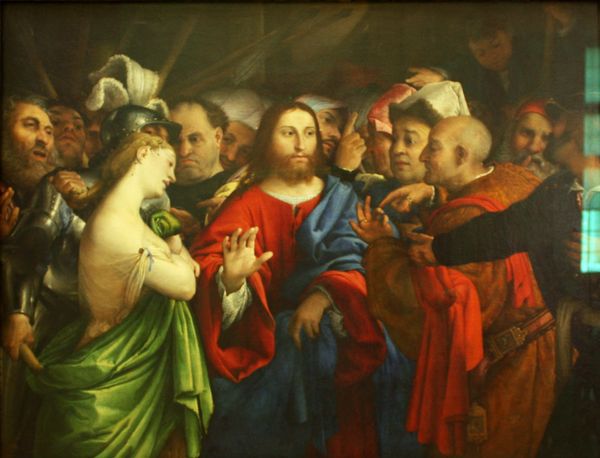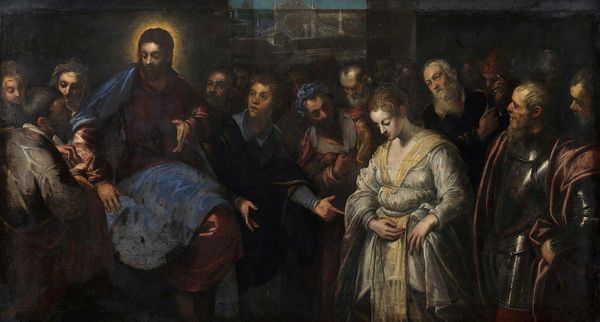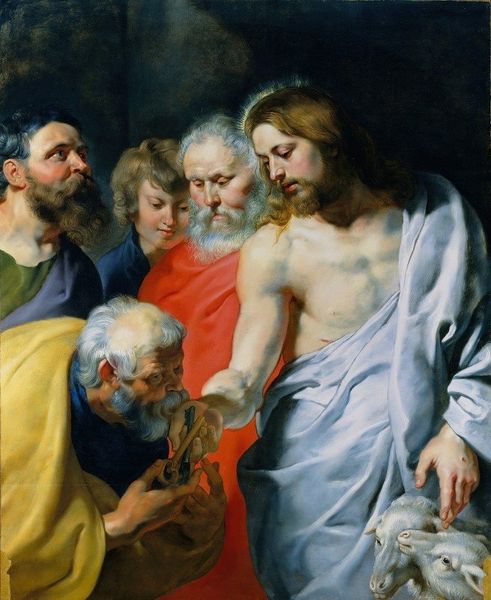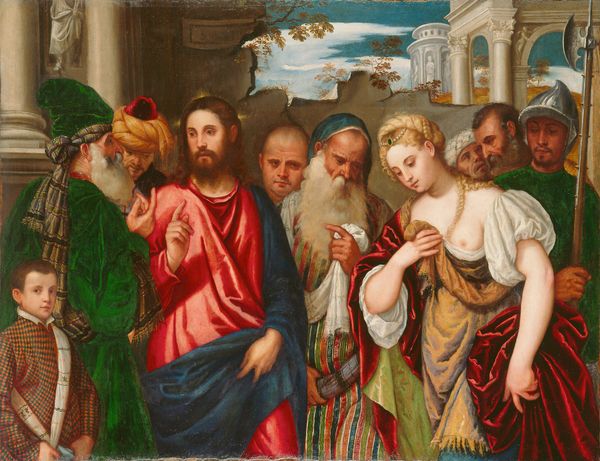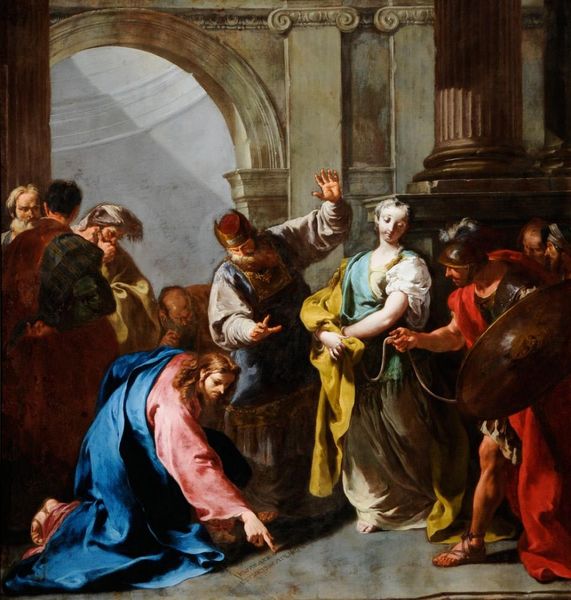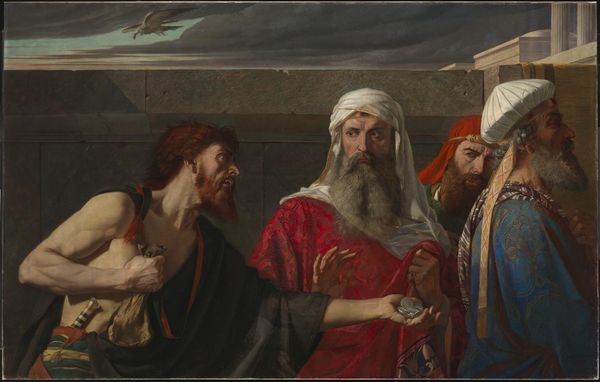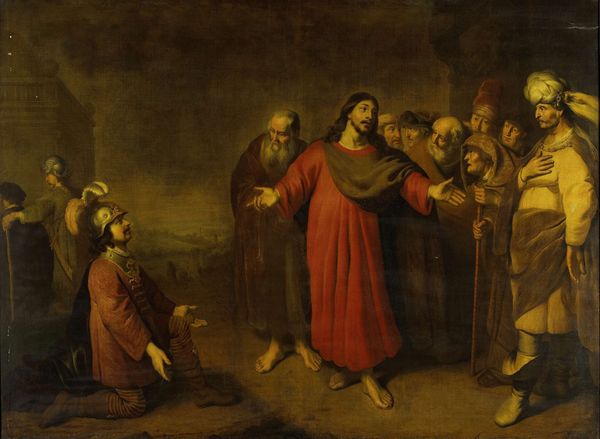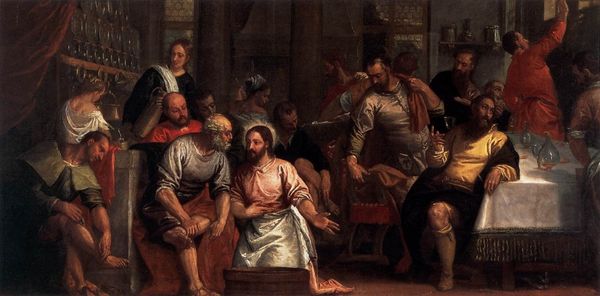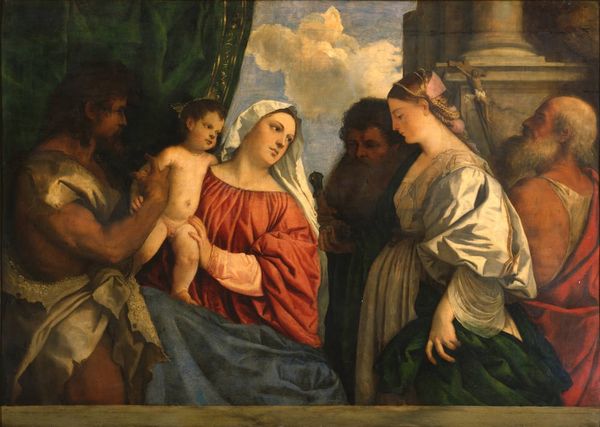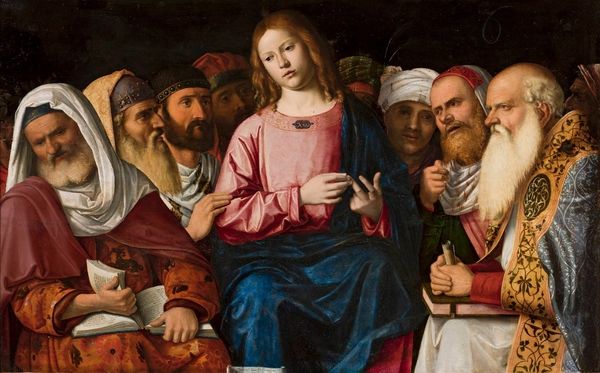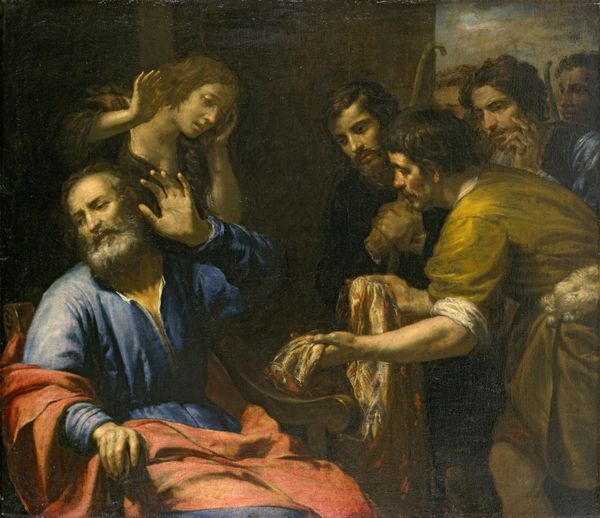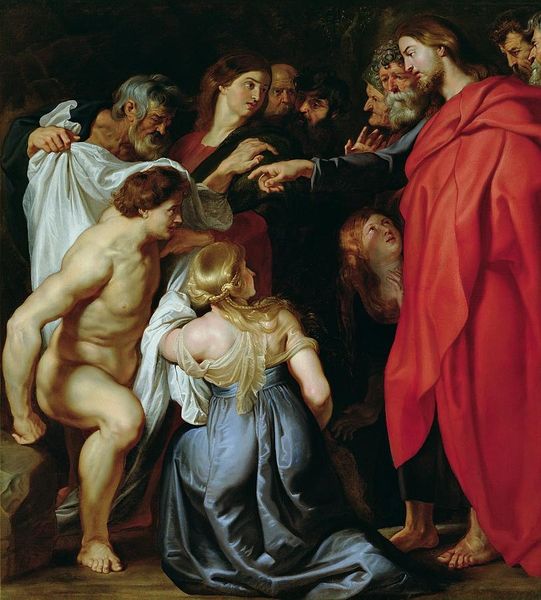
#
character portrait
#
possibly oil pastel
#
oil painting
#
portrait reference
#
acrylic on canvas
#
underpainting
#
painting painterly
#
portrait art
#
fine art portrait
#
celebrity portrait
Copyright: Public domain
Peter Paul Rubens painted “Christ and the Adulteress,” a scene that captures a pivotal moment of judgment and grace. Rubens, a leading figure in the Flemish Baroque, lived in a society marked by strict social hierarchies and religious norms. Here, the charged encounter between Christ and a woman accused of adultery becomes a stage for complex power dynamics. The male figures, cloaked in authority, embody a rigid patriarchal structure, while the woman is reduced to her transgression, her identity overshadowed by shame. Yet, Rubens directs our gaze toward the subtle humanity in each figure, challenging us to consider the weight of societal expectations. The gaze of the woman is particularly striking, heavy with both fear and defiance. Rubens asks us to reflect on how we assign value and dignity, and to remember the potential for compassion within systems of judgment. He transforms a moment of condemnation into an appeal for understanding and redemption.
Comments
No comments
Be the first to comment and join the conversation on the ultimate creative platform.
